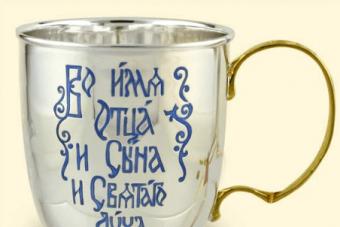This plant has been used in folk and official medicine for centuries. Every person should pay attention to the small white flowers and add such a remedy to their first aid kit. Since ancient times, yarrow has been widely used in folk medicine, as it has many useful substances, including tannins. It is popularly called tenacious grass, cutter, soldier's cleaner. For the preparation of various medicines and as folk remedies, not only the flowers of this plant are used, but also the leaves, roots, and stems.
Useful and healing properties
This plant has an impressive list of healing properties, thanks to its unique composition. For example, it contains tannins that have anti-inflammatory and bactericidal properties. They are able to soothe irritated skin and tone it. And vitamin K effectively increases the strength of capillaries, helps stop various bleeding, and also quickly and effectively heal ulcers and wounds.
By the way, this vitamin “can” be converted into vitamin A in the human body, a deficiency of which leads to deterioration in the appearance and condition of hair (including graying), peeling skin, the appearance of wrinkles and brittle nails.
In addition to all of the above, yarrow contains essential oil, vitamin C, choline, flavonoids and many other unique substances. As a result, the herb has hemostatic, bactericidal, anti-inflammatory and choleretic properties.
What are the indications for use?
Yarrow will be useful for anyone who has any digestive problems. Thanks to its astringent properties, it helps a person easily cope with diarrhea and even dysentery. A decoction of the herb under discussion perfectly stimulates and improves liver function.
Yarrow is also indicated for children and adults for flu and colds. In these diseases, it has a diaphoretic effect on the body and also stimulates the patient’s appetite.

For women, weed is useful because it can reduce excessive menstrual bleeding, as well as restore a normal healthy cycle.
Traditional healers prescribe decoctions and infusions of yarrow for hemorrhoids, varicose veins, and thrombosis. These same remedies help get rid of cystitis and bladder stones. And, in addition, they alleviate the patient’s condition with joint diseases and improve the condition of his nervous system.
Contraindications
But we should also not forget that in some cases this plant can be harmful and poisonous to the human body. Therefore, before you start using it, you must carefully study all available contraindications.
For example, the herb under discussion is dangerous for people who have increased blood clotting and a tendency to form blood clots. Also, all girls who are in an interesting situation will have to refuse such medicine.
Yarrow is also contraindicated for those who suffer from low blood pressure, as this herb can lower it even further.
In general, it can be safely used only under the close supervision of an experienced herbalist, who will be able to select an individual dosage for a person and at the same time take into account all the individual characteristics of his body, including existing diseases and contraindications.

The location where the plant in question was collected is also very important. Indeed, if the yarrow grew in environmentally unfavorable areas, the grass can be heavily polluted and bring more harm to humans than good.
What does the common yarrow plant look like?
The medicinal plant under discussion is quite easy to distinguish from all the others and is immediately noticeable in the meadow. It grows almost everywhere. Its flowers look like large bouquets of daisies, greatly reduced in size. Yellow center and white inflorescences.
You can admire such flowers from early spring to late autumn. At the same time, a very unusual specific aroma emanates from the plant, and, in addition, it tastes bitter.
Decoction in medicine
To prepare a decoction from this plant, you need to take one tablespoon of finely chopped herb, pour 250 milliliters of hot water into it, and then put it on low heat and bring to a boil. After this, remove the finished product from the heat, leave it in a dark place for half an hour, and then strain through several layers of gauze. In official medicine, such a decoction is prescribed for diabetes mellitus and as a means of weight loss. It is taken three times a day after meals, 0.1 liter.

Yarrow collection
For medicinal purposes, as a rule, both the flowers and the grass of this plant are harvested. The grass should be collected strictly during the flowering phase, cutting off the very tops of the shoots with convenient scissors. Their length should not exceed 15 centimeters. But rough, hard, leafless bases should not get there. And the inflorescences should be cut no more than 2 centimeters. To make your work easier, you can simply mow the area of grass where the yarrow was found, and then select the necessary plants from the pile.
It is recommended to dry the collected raw materials in the open air, but at the same time protecting them from rain. For example, an attic is perfect for this purpose. The drying layer should not exceed 7 centimeters. The condition of the grass will need to be monitored throughout the drying process and turned over periodically. The shelf life of this natural medicine is 24 months.
Yarrow essential oil
This healing agent is used both internally and externally. Many people try to make the essential oil in question at home, although in reality it is a very labor-intensive process that will require a huge amount of raw materials and effort. Therefore, it is best to buy such a product at a pharmacy. Today it is freely sold in almost any of them. The main thing is to make sure that the packaging indicates that this is 100 percent essential oil, and not a healing mixture with many additives. Only in this case will it be possible to purchase a truly useful natural product.
Video: How to prepare an infusion of yarrow
Pharmacological action
- Not indicated. See instructions
Compound
Common yarrow herb.
Indications for use
Recommended: as a wound-healing, hemostatic (wounds, nasal, pulmonary, uterine and other bleeding); for gastritis, sluggish digestion, lack of appetite, peptic ulcers, colitis and enterocolitis, cholecystitis, inflammation of the urinary tract, urinary incontinence, tuberculosis, rheumatism, malaria, dyspepsia, women's diseases. Increases blood clotting. It has analgesic, antiallergic, antimicrobial, choleretic, hypotensive, diuretic, antiatherosclerotic, antispasmodic, antitumor (for malignant and benign tumors) effects.
Externally: for inflammation of the oral mucosa and weak gums. For the treatment of wounds, ulcers, boils, diathesis, scabies, scaly lichen, eczema, acne, hemorrhoids.
Release form
powder; filter bag, filter bag 1.5 g;
powder; filter bag, filter bag 2 g;
Contraindications for use
Individual intolerance to components.
Directions for use and doses
1. Infusion: pour 2 tablespoons of raw material with 2 cups of boiling water, close the lid, and leave for 40-60 minutes. Take 1/2 cup 3 times a day 30 minutes before meals. Externally – as rinses and lotions.
2. Decoction: pour 2 tablespoons of raw materials into 0.5 liters of boiling water and boil for 15 minutes, leave, strain. Take 1/4-1/3 cup 3 times a day 30 minutes before meals. Externally – for rinsing, enemas and rubbing.
3. Tincture: pour 50 g of raw material into 0.5 liters of vodka (or 40% alcohol). Leave for 2-3 weeks in a warm, dark place. Take 40-50 drops 3 times a day before meals.
Storage conditions
In a dry place, protected from light, at a temperature not exceeding 25 °C.
Keep out of the reach of children.
Best before date
The description of vitamin Yarrow is intended for informational purposes only. Before starting to use any drug, it is recommended to consult a doctor and read the instructions for use. For more complete information, please refer to the manufacturer's instructions. Do not self-medicate; EUROLAB is not responsible for the consequences caused by the use of information posted on the portal. Any information on the project does not replace consultation with a specialist and cannot be a guarantee of the positive effect of the drug you use. The opinions of EUROLAB portal users may not coincide with the opinions of the site Administration.
Are you interested in Vitamin Yarrow? Do you want to know more detailed information or do you need a doctor's examination? Or do you need an inspection? You can make an appointment with a doctor– clinic Eurolab always at your service! The best doctors will examine you, advise you, provide the necessary assistance and make a diagnosis. you also can call a doctor at home. Clinic Eurolab open for you around the clock.
Attention! The information presented in the vitamins and dietary supplements section is intended for informational purposes and should not be a basis for self-medication. Some of the drugs have a number of contraindications. Patients need to consult a specialist!
If you are interested in any other vitamins, vitamin-mineral complexes or dietary supplements, their descriptions and instructions for use, their analogues, information about the composition and form of release, indications for use and side effects, methods of use, dosages and contraindications, notes about the prescription of the drug for children, newborns and pregnant women, price and consumer reviews, or you have any other questions and suggestions - write to us, we will definitely try to help you.
Yarrow grass
Instructions for medical use - RU No. LP-004327
Last modified date: 06.06.2017
Dosage form
Chopped grass.
Compound
Yarrow grass.
Description of the dosage form
Pieces of leaves, stems, flower heads and individual flowers. The color ranges from grayish-green to yellowish-green with yellowish-white, light green, white, reddish-green and grayish-brown inclusions. The smell is weak, aromatic. The taste of the water extract is spicy and bitter.
Characteristic
Yarrow herb contains flavonoids, essential oil, vitamin K, bitterness, tannins, organic acids, macro- and microelements, and other biologically active substances.
Pharmacological group
Herbal remedy.
pharmachologic effect
An infusion of yarrow herb has hemostatic, anti-inflammatory and antispasmodic effects.
Indications
Heavy menstrual bleeding (as part of complex therapy), minor bleeding in the post-coagulation period of treatment for cervical erosion. Spasm of smooth muscles of the gastrointestinal tract.
Contraindications
Hypersensitivity to the drug and other plants of the Asteraceae family; pregnancy, children under 12 years of age.
Carefully.
With increased blood clotting, thromboembolism (history).
Use during pregnancy and breastfeeding
It is not recommended to use the drug orally during breastfeeding due to the lack of data on the safety of its use in nursing mothers. There is no information about the possibility of the biologically active substances of yarrow herb passing into breast milk. If it is necessary to use the drug, the issue of stopping breastfeeding while taking the drug should be decided.
Directions for use and doses
About 15 g (3 tablespoons) of yarrow herb are placed in an enamel bowl, pour 200 ml (1 glass) of hot boiled water, cover with a lid and heat in a boiling water bath with occasional stirring for 15 minutes, cool at room temperature for 45 minutes, filter, the remaining raw materials are squeezed out. The volume of the resulting infusion is adjusted to 200 ml with boiled water.
The infusion is taken orally warm, 2-3 tablespoons 3 times a day, 30 minutes before meals.
Side effects
Allergic reactions are possible.
Overdose
No cases of overdose have been reported to date.
Interaction
Not described.
special instructions
If, while using the drug, symptoms persist without improvement for more than one week or worsen, you should consult a doctor.
Influence on the ability to drive vehicles and machinery.
The drug does not affect the ability to perform potentially hazardous activities that require increased concentration of attention and speed of psychomotor reactions (including driving vehicles, working with moving mechanisms).
Release form
Chopped grass. 40 g, 50 g, 75 g, 100 g of the drug in cardboard packs with an inner bag.
Instructions for use, folded with the text inside, are inserted into the pack, or the text of the instructions in full is applied to the pack.
Storage conditions
In original packaging at a temperature not exceeding 25°C; prepared infusion - in a cool place for no more than 2 days.
Keep out of the reach of children!
Common yarrow is a herbaceous perennial from the Asteraceae family. The wide distribution and pronounced medicinal properties of yarrow are appreciated by herbalists and adherents of natural treatment.
This plant has such names as poreznik, whitehead, gulavitsa. A tenacious herb has taken root among military doctors, since in case of injury this plant can save lives. It also has a distinctive, recognizable smell - those who smelled the aroma of yarrow will never forget it.
Today, yarrow is used both in folk recipes and in official pharmacology. The beneficial properties and contraindications of yarrow have been well studied. Knowing them, some health problems can be solved without resorting to synthetic drugs, which is important if you are intolerant to the latter.
Ancient legends are associated with the culture, which eloquently demonstrate its properties. The Latin name of the plant Achillea is consonant with Achilles. This was the name of the famous hero of the Trojan War. According to legend, Achilles stopped bleeding with the help of yarrow. Dioscorides used “wound herbs” to heal open wounds and skin lesions. The famous Avicenna in his “Canons” also described the healing properties of the plant and the conditions for which it is indicated. The ancient Scythians and the loyal warriors of Alexander the Great used the plant to stop bleeding. Commander Suvorov, who took care of every soldier, went into battle only if the detachment was equipped with powder from the plant.
Peasants have long and still use yarrow herb to obtain a decoction, the properties of which help destroy pests of agricultural plants, such as aphids and spider mites.
"Mille" in Latin means "thousand", and "folium" is a leaf. Those. The literal translation of yarrow is a thousand leaves. Upon examination, the leaves of this plant are dissected into many lobes.
The plant is officially recognized as medicinal not only in Russia. Yarrow is also used in Finland, Switzerland, Austria, Sweden, and the Netherlands for many diseases.
Morphological description
The plant has a branched horizontal rhizome. The stems are erect, slightly pubescent, reaching a height of 15 - 80 cm, branching only at the top. Yarrow leaves are alternate, lanceolate or linear, dissected into thin segments. The upper leaves sit on the stem, and the lower ones have petioles.
Small yarrow flowers are white or pink and are collected in compact inflorescences-baskets. The inflorescences form a common corymbose inflorescence at the tips of the shoots, which consists of a large number of baskets. In each basket, the middle flowers are tubular, bisexual, and the marginal flowers are ligulate, female.
The plant blooms during the summer, from June. The silvery fruits of yarrow ripen en masse in August-October. Pollination is carried out by insects - the crop is considered a good honey plant. Yarrow reproduces both by rhizomes and by seeds.
It grows mainly on the edges of forests, meadows, grows well in the steppes, along roads and along the edges of fields, on the banks of reservoirs, among bushes, in fallow lands and wastelands, in villages. Yarrow is widespread in Asia and Europe, found everywhere in all regions of the European part of Russia, in many regions of the Caucasus, and in Siberia.
Collection and preparation
The herb and inflorescences of yarrow have medicinal value. Grass and inflorescences are harvested from the beginning to the middle of flowering, i.e. from June to August. To do this, the tops of the stems are cut off at a distance of 15 cm from the top. The leaves are simply torn off from the thick part of the stem. When harvesting flowers, carefully cut the peduncles to a length of 4 cm.
The grass is dried under wide awnings, in the attic or veranda. If a dryer is used, the air temperature should not exceed 40-45 C. When drying, the raw materials must be turned over. Dry raw materials have a peculiar smell. The herb should be stored in dry and dark places in paper bags for 2 years.
Collecting yarrow growing in urban areas or near roads is prohibited. In unfavorable environmental conditions, yarrow easily accumulates toxic substances, and its grass is unsuitable for collection.
Chemical composition
Yarrow leaves contain essential oil rich in chamazulene, the alkaloid achillein, esters, camphor, borneol, thujone, glycosides (luteolin and apigenin), cineole, tannins, resins, carotene, organic acids, amino acids, vitamins K, C, bitterness. Minerals were also discovered - magnesium, potassium, boron, zinc, calcium, selenium, copper and molybdenum.
Beneficial features
The medicinal properties of yarrow are varied and are associated with the chemical composition of the plant, which includes many biologically active substances.
- Gelenic forms of the plant (obtained by extraction) have a pronounced antispasmodic effect on the smooth muscle tissue of the biliary and urinary tracts and intestines. This effect leads to dilation of the biliary tract and increased bile secretion into the duodenum, increased diuresis and relief of pain associated with intestinal spasms. These properties are associated with the presence of flavonoids and essential compounds in the plant.
- The bitter taste of Achilleain irritates the endings of the taste nerves, resulting in the activation of the secretion of gastric juice. The plant reduces bloating and fights flatulence.
- Among all known herbs, this plant has the best hemostatic properties: when applied locally and systemically, it quickly stops bleeding and does this without the formation of blood clots. The plant is indicated for any type of bleeding (except arterial) and at any age. Thrombophlebitis, heart attack and stroke are not strict restrictions on the use of yarrow, while other hemostatic drugs are dangerous to use for such diagnoses.
- The plant has anti-inflammatory, antiallergic and bactericidal properties thanks to essential oils, chamazulene and tannins.
- When applied topically, yarrow has an anti-burn effect.
- In moderate doses, hypotensive and sedative effects were noted.
Main indications for use
Since the beneficial properties and range of therapeutic effects of yarrow preparations are very wide, it is used for:
- various bleedings: external, uterine, hemorrhoidal, pulmonary, intestinal, gingival, nasal, etc. (except arterial);
- intestinal infections, acute and chronic: dysentery, diarrhea, colitis;
- peptic ulcer, cholecystitis, pancreatitis, hepatitis;
- pyelonephritis, glomerulonephritis, with cystitis;
- obesity;
- atherosclerosis;
- scratches, wounds, abrasions, eczema, diathesis, burns;
- inflammation of the gums, throat;
- acne, boils, fistulas;
- hair loss.
Folk recipes
Fresh Juice
Grind the fresh yarrow herb and squeeze the juice out of the pulp. The juice is bitter, before use it is mixed with natural honey. The average dose per reception is 1-1.5 tsp. Take three times a day.
- This is an ideal remedy for internal and external bleeding. Particularly effective for internal bleeding: nasal, gastrointestinal, uterine, pulmonary.
- Thirty drops of yarrow juice, diluted in equal proportions with mint juice and grape wine, help with cardiac arrhythmias.
- In addition, the juice is good for anemia.
- Another area of application for yarrow juice is to increase breast milk production: 1 tsp. 3 r/day.
- Used to prevent stone formation in the kidneys and gall bladder.
- Fresh juice of the plant helps with coughs, with tuberculosis, to improve appetite, with anemia, and for the treatment of liver diseases accompanied by jaundice.
Yarrow decoction
1 tsp pour 250 gr. boiled water, boil the broth for 5–10 minutes over low heat and strain. The average dose is 50 ml per dose/three times a day.
- Widely used to stop bleeding, internal and external. It is especially recommended for the treatment of women in labor after severe labor loss.
- It helps well with hemorrhoids, especially during exacerbation.
- The decoction has a pronounced diaphoretic and diuretic effect and is used for edema, as well as for hyperthermia.
- Helps treat chronic gastritis and gastrointestinal tract. Helps in the treatment of diarrhea, intestinal diseases, dyspepsia and nausea. Effective against helminthic infestations. In these cases, take half a glass three times a day.
- The drug is used for the treatment of inflammatory diseases of the urinary tract, kidneys, urolithiasis, as well as urinary incontinence (nighttime).
- Helps with inflammatory gynecological diseases, to regulate the cycle. Used to relieve pain during menstruation.
- The dosage form has a regulating effect on metabolism.
- This is an effective remedy for the treatment of dizziness, headache, hysteria, insomnia, and neuralgia.
Flower decoction
2 tbsp. Pour boiling water (0.5 l) over dried flowers and boil over low heat for no more than 10 minutes. Daily washing with the decoction helps in the treatment of acne.
Yarrow infusion
Pour boiling water (250 ml) into a thermos, place 2 tbsp. dry grass plants. Seal and leave the product for an hour, strain and squeeze the raw materials. Take the infusion half an hour before meals, 1/3 cup three times a day (store for no more than 2 days in the refrigerator).
- A good remedy for intestinal pain (disappears 15 minutes after administration). Recommended for normalizing stool after food poisoning.
- The infusion can also be used for hair treatment (rinsing).
- This infusion is suitable for gargling, lotions, and also for washing wounds.
Alcohol tincture
Take 4 tbsp. l. dry raw materials, grind thoroughly. Place everything in a jar and fill it with vodka (100 ml), put it in a cool and dark place for a week. Strain the medicine and squeeze out the raw materials well.
- Internal administration of 20 drops 3 times a day helps in the treatment of cholecystitis, hepatitis, pyelonephritis, glomerulonephritis and cystitis;
- When used externally, the tincture can be used to treat abrasions, acne (spot-on), and used to wash wounds.
Ointment
A handful of fresh leaves and flowers are crushed and thoroughly ground in a mortar, mixed in half with rendered lard. If fresh herb is not available, take one part of yarrow tincture and mix with four parts of Vaseline.
It is used fresh for bruises - for treatment, apply a thin layer of ointment to the skin.
Baths
A decoction of yarrow according to the recipe above, added to the bath in a volume of 1-2 liters, helps with scabies and lichen (scaly).
Tea
2 tbsp. leaves brewed in a liter of boiling water should be taken instead of tea to treat hemorrhoids.
Yarrow liquid extract
This is a pharmaceutical drug, which is not easy to obtain at home. Take 5-7 drops with water three times a day as a diuretic and choleretic, antiallergic, anti-inflammatory, hemostatic agent.
- Helps with pathologies of the liver and gall bladder, including dyskinesia, cholecystitis, gastritis and ulcers, urinary tract infections, helminthic infestations.
- Stops bleeding well.
- Tones the uterus, activates the secretion of gastric juice, increases blood clotting. Prescribed for neurasthenia and insomnia as a sedative. Used in nursing women to increase lactation.
Herbal infusions with yarrow
The use of yarrow in combination with other herbs is an effective and common way to treat a wide range of diseases:
- Yarrow with chamomile(two thirds of yarrow flowers and one third of chamomile flowers) in the amount of 2 tbsp. pour half a liter of boiling water and steam. This steam is good to wash your face with acne (for treatment). Recommended for use as a wound healing agent, 100 ml 3 times a day. for any wounds.
- 2 tbsp. mixtures of yarrow and chamomile (equal parts), brewed in a glass of boiled water, help with pain and stomach cramps: 3-4 times a day, half a glass.
- Tea with yarrow and St. John's wort(1 tablespoon per 1000 ml of boiling water) is useful for cholecystitis and liver diseases.
- Yarrow with nettle leaf(1 tablespoon each) pour 0.5 liters of boiling water and leave for 3 hours. This infusion is useful for painful periods: take 100 ml 4 times a day a week before menstruation and in the first days of discharge.
- Yarrow with celandine- Helps well with inflammatory diseases of the kidneys and bladder. To obtain a decoction, mix dry herbs and 1 tbsp. The mixture is poured with half a liter of boiling water and boiled over low heat for 10 minutes. Take 2 tbsp. in 3-4 hours. In the case of oncopathology of the bladder or kidneys, it is recommended to add tenacious bedstraw, marsh cudweed and fireweed flowers, 1 tsp each, to these herbs. and take the decoction according to the indicated scheme - this will slow down the progression of the disease.
- Yarrow with mint- used for the treatment of gastritis, and also have an antispasmodic and anti-inflammatory effect, can be used for gastrointestinal spasms and inflammatory diseases. 1 tbsp. Brew the crushed components of the collection with half a liter of boiling water, leave for 30 minutes and take 100 ml 20-25 minutes before meals four times a day and always before bedtime.
- Yarrow with calendula helps in the fight against local ulcerative defects of the gastric and duodenal mucosa, trophic disorders associated with ulcerative lesions. Effective for the treatment of infectious bacterial processes, and also helps to neutralize aggressive factors that cause gastritis and ulcerative disorders. To prepare a healthy infusion, 1 tbsp. a mixture of two herbs, pour 400 ml of boiling water, leave and take 50 ml three times a day before meals.
- Yarrow with plantain, chamomile and St. John's wort helps treat stomach and duodenal ulcers and stop bleeding. A medicinal infusion is prepared from a mixture of dry herbs in the amount of 1 tbsp. and half a liter of boiling water, leave for 60 minutes and take 50 ml on an empty stomach three times a day before meals.
- Yarrow with wormwood(1:4) is traditionally used to improve appetite. 1 tsp of the mixture in the specified ratio, brew 400 ml of boiling water, take a quarter glass three times a day.
Contraindications and special instructions for use
All medicinal forms of the plant have some toxic effect, so internal consumption requires caution. In particular, you should not exceed the recommended dosage, nor should you use yarrow for a long time.
Yarrow should not be used:
- children under 6 years old;
- pregnant women;
- individual intolerance;
- severe hypotension.
Despite the absence of direct contraindications, yarrow preparations are prescribed with caution if there is a tendency to form blood clots. The plant should not be used if there is increased secretion of the gastric glands.
In a number of patients, long-term therapy with yarrow-based drugs leads to side effects such as dizziness and skin rash. If any unusual phenomena or reactions to yarrow occur, treatment should be discontinued.
Common yarrow is a widespread medicinal plant belonging to the Asteraceae or Compositae family. A typical rhizomatous perennial is found everywhere, excluding northern regions and arid desert areas.
A greyish-green plant up to 80 cm high has a characteristic pungent odor that appears when mowing or picking the pubescent herbaceous stems. The leaves are distinctly pinnately dissected.
Numerous white inflorescences-baskets are collected in flat shields. Yarrow blooms, depending on the region of growth, from May to September. It reproduces by thick, creeping rhizomes or numerous small seeds. Due to its high reproductive capacity, it easily displaces other species of meadow plants.
Preparation and drying of raw materials
Medicinal raw materials are collected during the flowering period. The upper leafy part of the plant with inflorescences or only inflorescences is harvested. Shoots (up to 15 cm) and shields (from 2-3 cm of the stem) are cut or mowed using pruners, sickle or scythe.
The collected raw materials are laid out in a thin layer under the canopies and turned periodically. Properly dried yarrow herb has a peculiar, pungent, bitter odor.
Pharmacological characteristics
 Properly prepared plant materials contain a significant amount of biologically active compounds, essential oils, flavonoids, alkaloids, macro- and microelements.
Properly prepared plant materials contain a significant amount of biologically active compounds, essential oils, flavonoids, alkaloids, macro- and microelements.
Yarrow herb is a typical pharmacological agent of plant origin, which has a pronounced anti-inflammatory, hemostatic, antispasmodic, bactericidal, wound-healing, choleretic, appetite stimulant and, partially, hypotensive effect.
It is used in official, traditional and folk medicine in its pure form and as part of complex preparations for external and internal use.
The mechanism of the hemostatic (hemostatic) effect of yarrow herb is based on the ability of a complex of biologically active substances to activate fibrin and avoid the formation of blood clots.
Indications
Indications for the use of yarrow herb (Millefolii herba) are the following conditions:
- abnormally heavy menstrual and uterine bleeding of various origins;
- hemorrhoidal bleeding;
- digestive disorders and biliary dyskinesia;
- stomach bleeding;
- dermatoses of various etiologies.
Medicinal properties
Yarrow herb has pronounced hemostatic, wound healing, anti-inflammatory, diuretic, anticonvulsant and analgesic properties. It is used as a monocomponent and as part of complex preparations to normalize metabolism.
Pharmaceutical raw materials serve as the basis for the preparation of decoctions, liquid infusions or extracts.
Directions for use and doses
 An infusion from pharmaceutical raw materials of yarrow herb (Infusum herbae Millefolii) is prepared as follows:
An infusion from pharmaceutical raw materials of yarrow herb (Infusum herbae Millefolii) is prepared as follows:
2 tablespoons of raw materials (about 15 g) are poured into an enamel container and poured with a glass of hot boiled water (200 ml). Cover the container with a lid and place in a boiling water bath for 15 minutes. The infusion is cooled at room temperature for at least 45 minutes, then filtered, carefully squeezing out the remaining raw materials. The resulting volume is brought to 200 ml with boiled water. It is recommended to store the finished product in a cool place for no more than 48 hours.
Liquid extract of yarrow (Extractum Millefolii fluidum) take 40-50 drops 3 times a day
You can also use yarrow juice, which is prepared from the grass of a flowering plant. Take from 1 teaspoon to 1/3 cup 3 times a day before meals.
Contraindications
Despite the fact that pharmacological products of plant origin contain lower doses of active ingredients than tablet preparations, they may also have contraindications for use.
Yarrow herb should not be taken by people with a tendency to increased blood clots (with increased blood clotting). Taking yarrow is contraindicated during pregnancy. Use with caution in children under 12 years of age.
Side effects
Allergic reactions (dermatitis) are indicated as side effects of the drugs. Long-term use of herbal infusions can cause dizziness and headaches of varying intensity.
Storage conditions
 It is recommended to store plant materials in a dry, dark place. The prepared infusion or decoction should be stored at a low temperature for no more than 48 hours and out of reach of children.
It is recommended to store plant materials in a dry, dark place. The prepared infusion or decoction should be stored at a low temperature for no more than 48 hours and out of reach of children.
Best before date
Depending on storage conditions, the shelf life ranges from 2 to 3 years. Should not be used after the expiration date.
Conditions for dispensing from pharmacies
Yarrow herb and its derivatives are available without a prescription.
Applications in other areas
Due to the presence of essential oils in plants and flowers, yarrow is widely used in the cuisine of various countries. It is mainly used for flavoring drinks (tinctures, liqueurs, kvass) and confectionery products, as well as as a seasoning for first and second courses.
In addition, it has insecticidal properties and is often used to control a number of crop pests.
Yarrow impurities in forage hay contribute to better digestibility of the latter.





